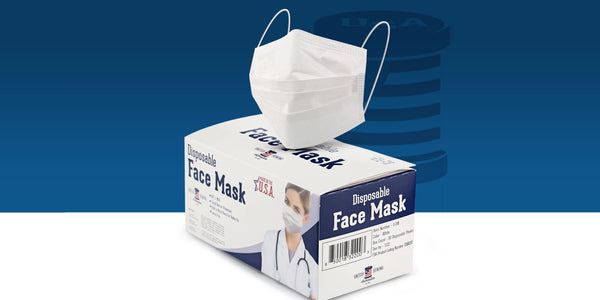8 Tips For Exercising With a Mask
It's spring again, and the challenges in exercising with a mask from last spring are still with us.
Gyms have opened and changed their business model in many places. You'll need a reservation or online check-in to work out in some, and most are still not full capacity. For home or outdoor workouts, it's not necessary to wear a mask in most cases, but masks remain an excellent way to reduce the spread of coronavirus in more confined settings.
Although masks can be uncomfortable or hinder your breathing, there are ways to help that. Here are eight tips for getting your workout in when you're masked up.
1. Take Deep Breaths
Take deeper, slower breaths through your nose, and exhale slower, too, through your mouth if necessary, especially when running with a mask. This will help you not feel light-headed, and nose breaths will reduce moisture in your mask. Some runners use this technique in their normal training anyway.
2. Pick a Good Fit
Consider the fit, materials, and shape of the mask as most important. The World Health Organization recommends masks fit snug around the chin and nose. Choose breathable, moisture-wicking material, such as polyester, to allow for less restricted breathing.
3. Carry a Spare Mask
Especially if you choose disposable masks, keep an extra one with you. Bands can break on paper masks, or the material becomes too wet to remain effective. Keep a travel-size bottle of hand sanitizer for when you have to switch masks.
4. Double Mask It
The Center for Disease Control now recommends wearing two masks, including during exercise. Any discomfort will subside, as it did in becoming accustomed to one mask. If you've been masking up, the second layer won't make much of a difference for comfort.
5. Take a Break
You'll have some airflow restriction to your lungs, so be wary of dizziness or nausea. Listen to your body as you would in normal exercise, and don't take risks. Decrease intensity or stop exercising if you become short of breath or numb.
6. Bring your Own Gear
Along with your two masks, bring any personal equipment you need for your workout, if possible. Avoid community yoga mats, and bring a filled water bottle to group workouts. The less contact you come in with municipal surfaces, the better.
7. Use Good Hygiene
Try not to mess with your mask as you work out because you could contaminate your hands. Wash your hands before you put on your mask, with soap and water or an alcohol-based sanitizer. Don't touch your eyes, nose, or mouth as you remove your mask, and wash your hands immediately afterward.
8. Focus and Be Patient
Concentrate on your fitness goals, not the fact that you have to wear a mask while exercising. You're working out to better your health, and wearing a mask keeps you safe to do so. Give yourself grace if you can't maintain the pace you had before the pandemic.

